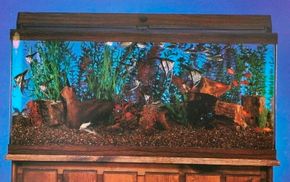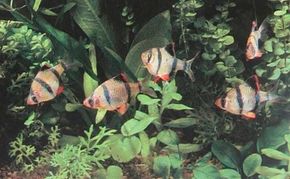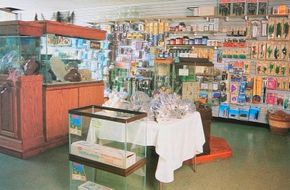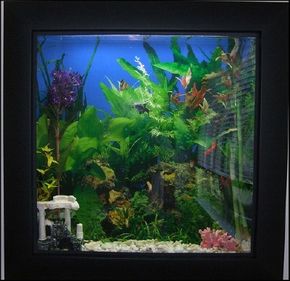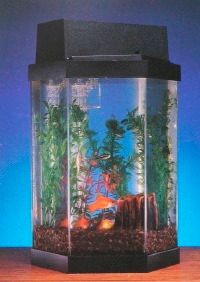For many years, aquarists have used guidelines that relate the size of the fish to the volume of the tank. The most common guide when choosing an aquarium size is one inch of fish per gallon of water. This refers to adult fish and does not include the tail.
Although not a bad rule of thumb, this guideline has two major shortcomings. First of all, a fish's length does not by itself indicate the total impact the fish will have on a closed aquatic system.
While some fish are slim, others have much fuller bodies. As fish grow, their weight or mass may increase much faster than their length. The end result is that an aquarium may meet the guidelines of an inch of fish for every gallon of water but still be overstocked or understocked.
The second problem with this guideline is that it doesn't account for surface area, which is a real limiting factor. Fish require oxygen to live. They remove dissolved oxygen from the water and release carbon dioxide into the water, so the dissolved oxygen content of a tank is one of the things that determines a safe stocking level.
Oxygen enters the water from the atmosphere at the surface, and carbon dioxide is released into the atmosphere at the surface. The greater the surface area, the greater the exchange of oxygen and carbon dioxide and the more fish the tank can support.
To take surface area into account, a good guideline for stocking an aquarium is one inch of adult fish (not including the tail) for every 24 square inches of surface area. This also does not account for the
difference between slim and broad fish, but this rule of thumb at least provides a greater margin of safety.
This guideline, by the way, is for tropical aquarium fish. Cold-water fish, such as goldfish, need 30 square inches of surface area per inch, which takes into account their much greater body mass per inch and greater oxygen requirements.
What all of this means is that when choosing an aquarium, it is best to try to select the one that has the greatest surface area for a given volume. If you choose a tank shape that offers less surface area, take that into consideration when stocking it.
Aquariums of the same capacity but different surface areas come in three basic types: regular tanks, show tanks, and long tanks. Show tanks tend to be taller than regular tanks, thus providing a larger front glass area to view the fish but a smaller surface area. They are narrower front to back than normal tanks.
Long tanks have a greater length than regular tanks, making for a very attractive display tank and increasing the surface area. Show tanks are particularly well-suited for deep-bodied fish, such as angelfish, whereas long tanks are good choices for territorial species or for fast-swimming, schooling fish.
A different tank shape is the hexagon aquarium, with six sides. These can make very attractive displays, but keep in mind that the surface area of this type of tank is less than that for a normal tank of the same volume.
Round or bubble tanks are even worse in this respect because the maximum amount of surface area is available only when the tank is half full. As the water level goes higher than this, the surface area decreases. This is the same problem that plagues goldfish bowls.
Worst of all are very tall, thin aquariums, which have the surface area of a much smaller aquarium.
Recently mini aquariums ranging from two to six gallons have become very popular. While they are attractive and inexpensive, these tanks can be very difficult to maintain. They hold limited amounts of water, they have only a minimal surface area, and they often come with inefficient filter systems.
Even experienced fishkeepers have a very difficult time maintaining healthy fish in tanks of this size.
To learn more about freshwater aquariums, see:
